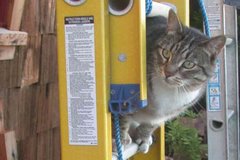2016.11.16
Caught Up and Planning Ahead
Today we were quite successful and described enough cores that we did not need to work after dinner. This gave me a chance to make a map that shows our progress. Also, I include some figures that have been posted on twitter from various sources. As I mentioned before, we plan on collecting some cores in the region near the M 7.8 earthquake in an attempt to find a turbidite that may have been emplaced as a result of strong ground shaking from that earthquake.
Above is my map. The planned core sites are still included. In addition, I have plotted the core sites where we have already collected cores (the red dots). Basically, we have collected cores in all the very high and most of the high priority sites. We are just ahead of schedule. We are lucky to be in this position as there have not been any major obstacles or mechanical catastrophes that sometimes happen. We have not endured a storm too big. We have not had any equipment failures. So, we have basically collected the minimum cores to be able to complete this study. If the ship stops to function tomorrow, we would have plenty of data to build a story.
We do intend to collect more cores on the way back south. These will include additional long cores (up to 6 meters) in high and medium priority sites. We will even collect some cores at low priority sites (we are heading out to the Hikurangi Trough to collect some cores right now, the green dots in the northeastern region of our planned coring area outlined in dashed white). We will also be collecting numerous multi-core cores (these sample the sediment-water interface so that we can develop Holocene depositional models). Data from these cores will help us estimate a latest Holocene hemipelagic sedimentation rate.
We are planning on leaving plenty of time to collect some cores in the southwestern part of our planning region, just offshore of the area that just ruptured multiple faults in the Cook Strait region. It appears that the initial earthquake may have been a thrust event that then triggered slip on several strike-slip fault systems. The USGS has prepared a fault plane solution, but please ignore it. It is vastly oversimplified and does not reflect the geometry of the mapped faults in the region.
I include an inset map from GNS that shows where they have documented surface ruptures from this earthquake series. There are estimates of 8-10 meters of offset on one strike-slip fault and up to 2 meters of uplift along the coast, probably on a thrust fault.
I include an inset map from Tim Wright that uses InSAR (Interferometric Synthetic Aperture Radar) data to estimate ground deformation. The blue colors represent down or away motion and the red colors represent up or towards motion. It is not possible to distinguish between down from away or between up from towards. The deformation supports the interpretation that this earthquake series is quite complex because of the fault interactions. The GNS team will take some while before they can get their boots on the ground, but we are all very excited to see what they find! I wish that I could extend my stay here a month to help out! (I need to get back to my classes to help them complete the semester)
Tuesday, November 15, 2016
Subscribe to:
Post Comments (Atom)



No comments:
Post a Comment